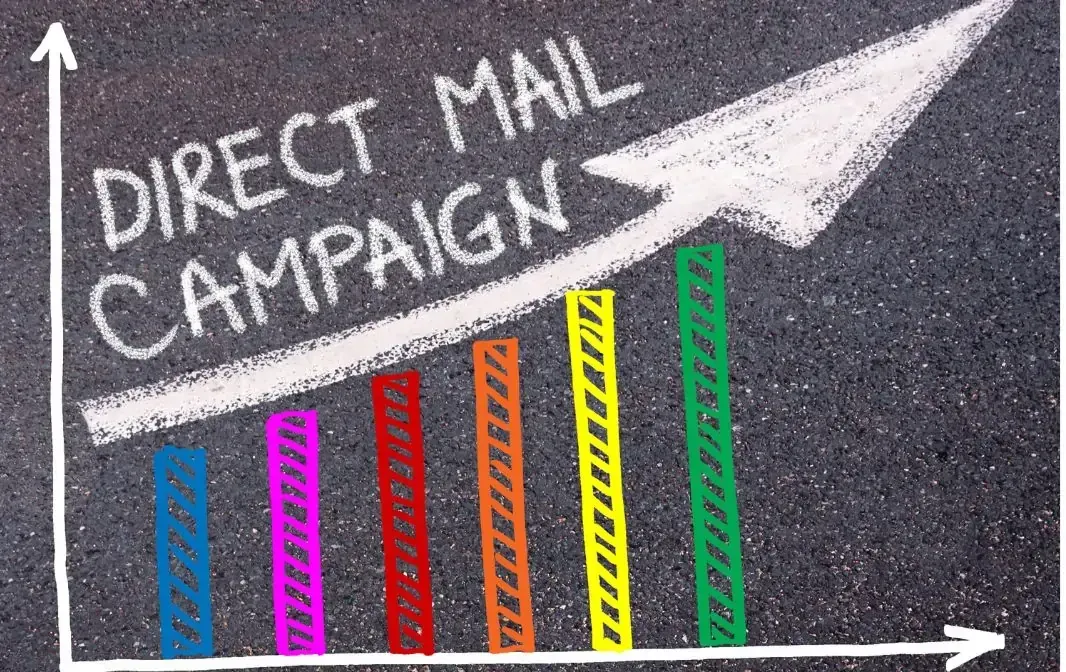Using Analytics to Improve Dental Marketing: Boost Your Practice

In today's competitive dental industry, leveraging dental marketing analytics is no longer a luxury but a necessity for achieving success. Whether you're a dental marketer or a dentist striving to expand your practice's reach, understanding and utilizing the right data metrics can significantly impact your marketing results. With the increasing availability of sophisticated tools and techniques, dental practices have the opportunity to optimize their marketing strategies to attract new patients, improve engagement, and reduce costs. This comprehensive guide will explore the importance of tracking the right metrics, provide tutorials on the most popular analytics tools, and showcase case studies that highlight the impact of data-driven strategies on dental marketing outcomes.
Why Dental Marketing Metrics Matter
Dental marketing metrics serve as the foundation for creating, refining, and optimizing your marketing strategies. They allow you to gain critical insights into patient behavior, identify successful campaigns, and make informed decisions that maximize your return on investment (ROI). Below are several reasons why monitoring dental marketing metrics is essential for growth:
- Understanding Patient Behavior: Data analytics give you the ability to track patient journeys from their first visit to your website to their eventual conversion into patients. This can help you understand where your prospective patients are coming from, what search terms they use, and which content they engage with the most.
- Optimizing Marketing Strategies: Metrics show you what’s working and what isn’t. For example, by reviewing key performance indicators (KPIs) like website traffic or click-through rates, you can adjust your marketing efforts to focus on channels that drive the most conversions, whether it’s paid ads or social media marketing.
- Improving ROI: Dental practices that monitor and act on key marketing metrics tend to allocate their budgets more effectively. By focusing resources on strategies that generate the highest return on investment, practices can boost overall profitability.
- Patient Acquisition Cost (PAC) is a critical metric to monitor because reducing this can result in higher margins.
- Personalizing Patient Experience: By analyzing patient data, you can create more personalized marketing campaigns that resonate with your audience. For example, tailoring email campaigns based on patient demographics or behavior leads to higher engagement and better outcomes. Personalization has become key to successful dental marketing, enabling practices to address specific patient needs, leading to improved retention and satisfaction rates.
Key Metrics to Track for Dental Marketing Success
When it comes to improving your dental marketing efforts, tracking the right metrics is vital. Here are some of the most important metrics that can help you refine your strategy and improve overall performance:
1. Website Traffic
Your website is often the first point of contact for potential patients. Monitoring the traffic to your website can provide insights into how many visitors you are attracting, where they are coming from, and which pages they spend the most time on. Metrics such as bounce rate and session duration offer a window into how engaging your website is and whether users are finding the information they need.
- Organic Traffic: This includes users who find your site through search engines like Google. It’s crucial to optimize your site for SEO to attract more organic visitors. Consider performing a regular SEO audit to ensure that your website ranks well for relevant search terms like "dental services in [your city]" or "best dentist near me". For more details, visitSEO Services.
2. Conversion Rates
The conversion rate measures how many visitors to your website take action, such as filling out a contact form, scheduling an appointment, or signing up for a newsletter. A higher conversion rate means your website is effectively encouraging visitors to engage with your practice. Strategies like A/B testing, call-to-action (CTA) placement, and user experience optimization can greatly improve conversion rates.
3. Patient Acquisition Cost (PAC)
PAC is a vital metric for measuring how much it costs your practice to acquire a new patient. This figure includes the cost of marketing campaigns, advertisements, and other promotional activities. By analyzing PAC, dental practices can optimize their spending to ensure the highest return on investment. Tracking PAC across different channels—such as direct mail, SEO, or Google Ads—allows practices to focus on the most cost-effective methods.
4. Retention Rates
Your retention rate is the percentage of patients who return for follow-up visits after their initial appointment. High retention rates indicate patient satisfaction and loyalty, while low rates may signal issues that need addressing, such as lack of follow-up communication or poor patient experiences. Implementing patient reminder systems, email marketing, or automated follow-up sequences through tools like HubSpot or Kissmetrics can significantly improve retention.
5. Engagement Metrics
Understanding how patients interact with your content is essential for optimizing your marketing strategy. Engagement metrics include actions like social media shares, time spent on your website, email open rates, and video views. By tracking engagement, you can fine-tune your content to make it more relevant and engaging, whether it’s on your blog, social media platforms, or email newsletters.
Popular Analytics Tools for Dental Practices
Several tools can help dental practices track and analyze their marketing metrics. Below are three popular analytics platforms that can enhance your dental marketing strategy:
1. Google Analytics
Google Analytics is an indispensable, free tool that offers a wealth of information about your website’s performance. It tracks user behavior, acquisition channels, and other key metrics that help you optimize your site for better conversions.
- Setting Up Google Analytics: Start by creating an account, setting up a property for your dental practice, and installing the tracking code on your website. Google provides clear instructions for getting started.
- Tracking Key Metrics: In Google Analytics, you can monitor traffic sources, track your most visited pages, and assess user behavior. This data will help you determine which areas of your site need improvement and where to focus your marketing efforts.
- Custom Reports: One of the most powerful features of Google Analytics is the ability to create custom reports. These reports can be tailored to track the metrics most important to your practice, such as appointment bookings, patient engagement, and conversion rates.
2. HubSpot
HubSpot is an all-in-one marketing, sales, and service platform designed to help you manage your entire patient journey—from acquisition to retention—while offering robust analytics features.
- Integrating HubSpot with Your Website: Start by setting up HubSpot’s tracking features on your website. This will allow you to collect essential data on visitor behavior, lead generation, and patient interactions.
- Using HubSpot Dashboards: HubSpot provides a customizable dashboard that displays key metrics at a glance. Use it to track everything from email campaign performance to lead conversions.
- Marketing Automation: HubSpot’s automation tools streamline marketing tasks, like sending automated follow-up emails to patients who haven’t scheduled a second visit, or personalizing outreach based on user behavior.
3. Kissmetrics
Kissmetrics specializes in behavioral analytics that allow you to track every action a patient takes from their first interaction with your website to their final conversion.
- Setting Up Kissmetrics: Begin by installing the tracking code on your website. This will allow you to start collecting data on patient behavior and how they navigate through your site.
- Analyzing Customer Behavior: Kissmetrics focuses on providing detailed insights into the customer journey. Use this data to pinpoint drop-off points, identify high-converting content, and understand where patients are getting stuck.
- A/B Testing: Kissmetrics also offers A/B testing features, allowing you to test different marketing messages, web page layouts, or email campaigns to determine which versions lead to the best results.
Real-World Case Studies: Analytics in Action
The following case studies demonstrate how real dental practices have improved their marketing outcomes by leveraging analytics.
Case Study 1: Increasing Patient Engagement
A dental practice implemented Google Analytics to monitor website traffic. They discovered that their blog posts were the most visited pages on the site, yet these pages were underutilized in their overall marketing strategy. By focusing on producing more high-quality blog content related to dental health tips and promoting it through social media and email newsletters, they managed to increase patient engagement by 35%.
Case Study 2: Reducing Patient Acquisition Costs
A dental clinic integrated HubSpot to monitor the performance of their email campaigns. By segmenting their email lists and personalizing content based on patient preferences—such as offering promotions or dental care tips tailored to different age groups—they reduced their Patient Acquisition Cost (PAC) by 20%. This allowed them to invest the savings back into more effective marketing channels, further improving their ROI.
Case Study 3: Enhancing Retention Rates
Using Kissmetrics, another practice analyzed patient behavior to identify a recurring drop-off point in the appointment scheduling process. Many patients visited the site but left before booking an appointment. By optimizing the appointment booking page—making it more user-friendly and reducing the number of required steps—they managed to improve their retention rates by 15%.
Embrace Dental Marketing Analytics for Long-Term Success
Embracing dental marketing analytics is no longer optional—it’s a necessity for long-term growth and success. By understanding and utilizing key metrics, using the right tools, and learning from real-world case studies, you can significantly enhance your marketing efforts and achieve better outcomes for your dental practice. Start tracking your metrics today, optimize your marketing strategies, and watch your practice thrive.






















